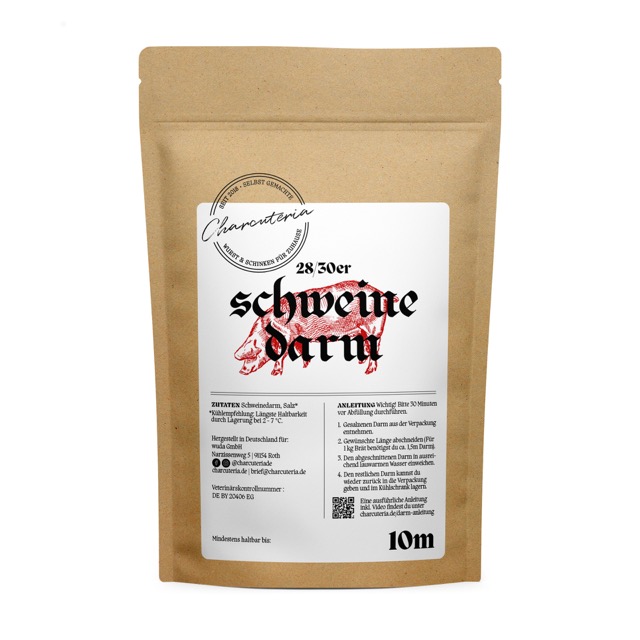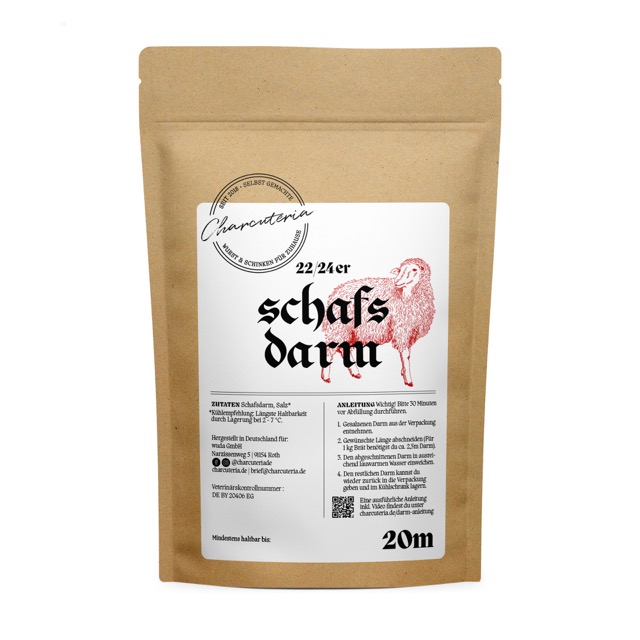In this article you will find all the important information on how to make sausage yourself
In addition to the equipment, I go into more detail about the meat and give you an overview of the different types of sausage that you can make in the future
Then I have a summary of the preservation and preparation methods and what of course should never be missing … sausage recipes.
I hope this post helps you figure out if “sausage making” is for you. Enjoy the read.
If you want to download a summary of the post, you can find it here.
If you are interested in a detailed explanation of the sausage making process, you can find my sausage book here, which will answer all your questions from A-Z. This is how you become a confident hobby sausage maker step by step.
Table of Contents
Chapter 1: What you need to make your own sausage
You will now get an overview of the equipment you need to make sausage. You will find traditional equipment as well as inexpensive alternatives, which are perfect for beginners. A detailed list of my equipment can be found here.
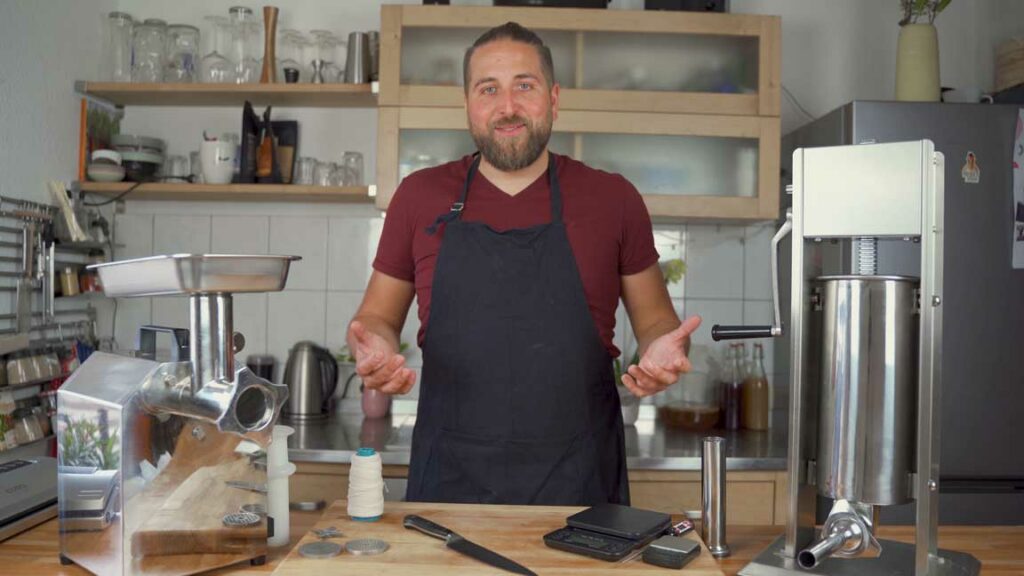
Meat grinder
The grinder is one of the most important tools in sausage making. With it you save the work of having to grind your meat yourself. In addition, you can use it as a sausage stuffer for the beginning
Mincers are available in many different sizes. This starts with a small hand meat grinder and goes over the attachment for your food processor to a more professional version
To your meat grinder you get different perforated discs (which produce a fine or coarse mass depending on the size) and a cross knife. Both should always be in good condition so that the meat can be ground well
Depending on how much sausage you want to make and how advanced you are, I recommend different models.
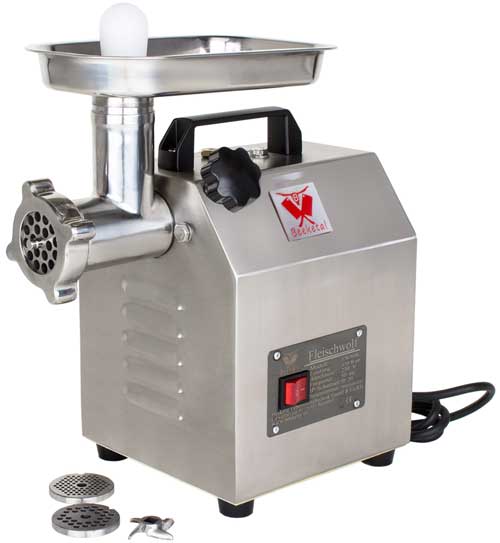
I use the a stainless steel grinder from a German company.
With its 80 kg/hr, it is more than sufficient for regular home sausage making.
There are very good similiar ones available world wide.
If you’re just starting out or only want to process smaller quantities, I personally recommend either a hand-operated meat grinder (due to the low entry cost) or an attachment if you already have a kneading machine.
If you still want to get your own meat grinder, I always recommend a stainless-steel one with power, as you won’t be happy with the small meat grinders for long.
Sausage casings, sausage casings
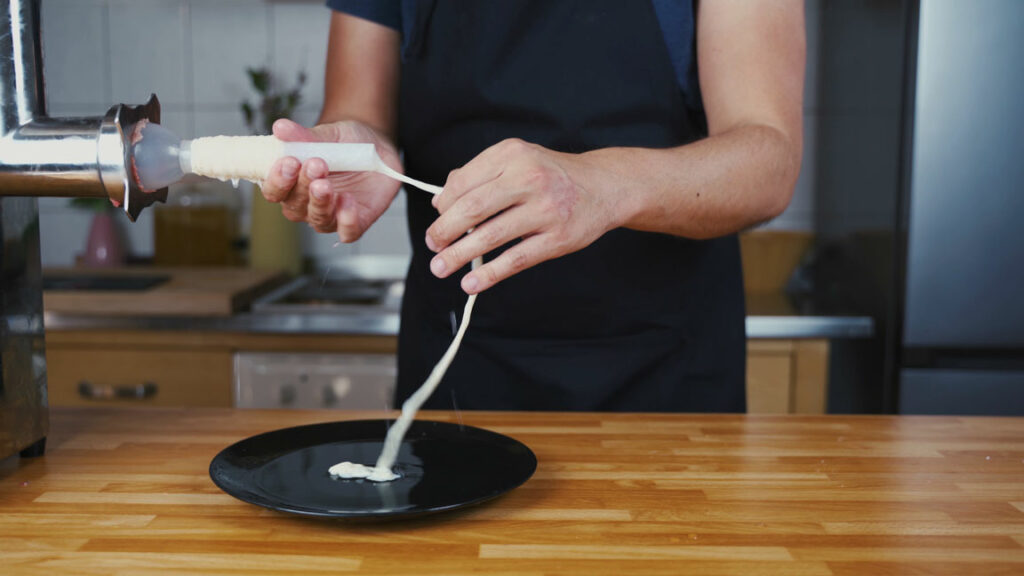
Sausage casings or sausage casings are an important tool in the hobby of sausage making
Especially when making bratwurst yourself, you can’t get around them.
There are many different casings made of pork, beef or sheep. If you want to know more about them, I have written a detailed article here.
You can also make many types of sausage yourself without casings by boiling them down in jars.
Natural casing / jar / can
You can fill the sausage into a natural casing as well as into a jar. If you prefer thicker sausages, you can use pork casings caliber 28/30. For thinner sausages you can use sheep casings caliber 22/24. For jars I usually use Weck casings.
Sausage filler / hand hopper
As soon as you make more sausages, you need your own sausage filler. There are different diameters to put it on.
I use a 3L stainless steel sausage filler.
For starters, filling attachments for your meat grinder also work.
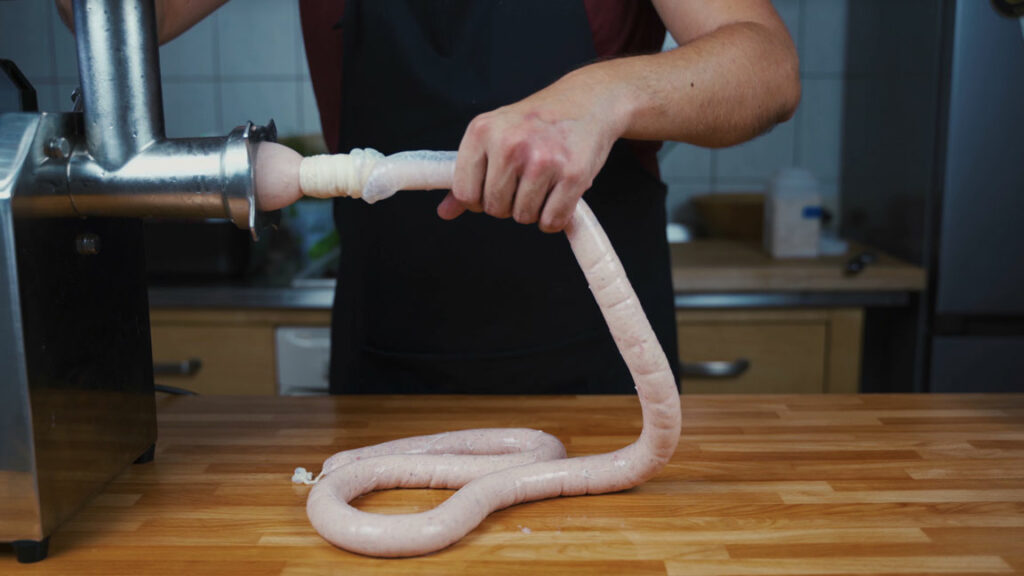
A manual filling funnel is only suitable for a thin, pulpy mass (e.g., liver sausage). A normal funnel is unfortunately not suitable, because the hole is usually too narrow
Cutter / Food processor
For some types of sausage, the sausage meat must be particularly fine. Therefore you need a cutter. The alternative is a food processor with sharp blades. It works similarly for small amounts of sausage.

I would say that a powerful food processor is sufficient for most small quantities. Cleaning is a bit of a hassle and for 1 kg or more of mass, you have to spread the chopping over several passes. But that’s obvious since it wasn’t made for that
Once you expand your hobby, you can switch to a larger version.
Salt, curing salt & spices
Salt is an important flavor carrier for the sausage, but it can also be used for preservation. Personally, I usually use fine sea salt.
With curing salt a small amount of nitrite present. The nitrite ensures that the meat retains the reddish luster, is used for shelf life and is mostly used for raw sausages
Recipes will specifically state what salt you need. Never add curing salt unless it is called for.
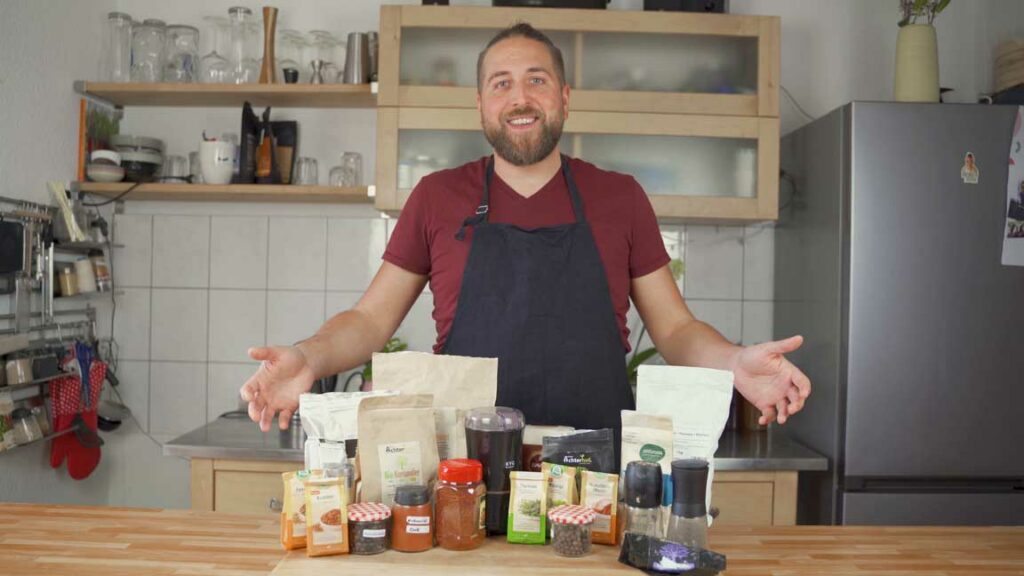
Spices are crucial for the sausage. They, along with salt, give it flavor. Each recipe usually has an exact specification of spices
The good thing is that you can decide which spices to use. So your sausage remains individual. And that’s why you want to make sausage yourself, right?
Chapter 2: The right meat for making your own sausage
The most important ingredient for making sausages is the meat. For most sausages pork is the main ingredient and some beef, rarely calf is added. Poultry and game are used for special sausages.
You can use any piece of meat for sausage making. However it is important to make sure that the lean-to-fat ratio is maintained. For example, Bratwursts normally have between 25% and 30% fat.
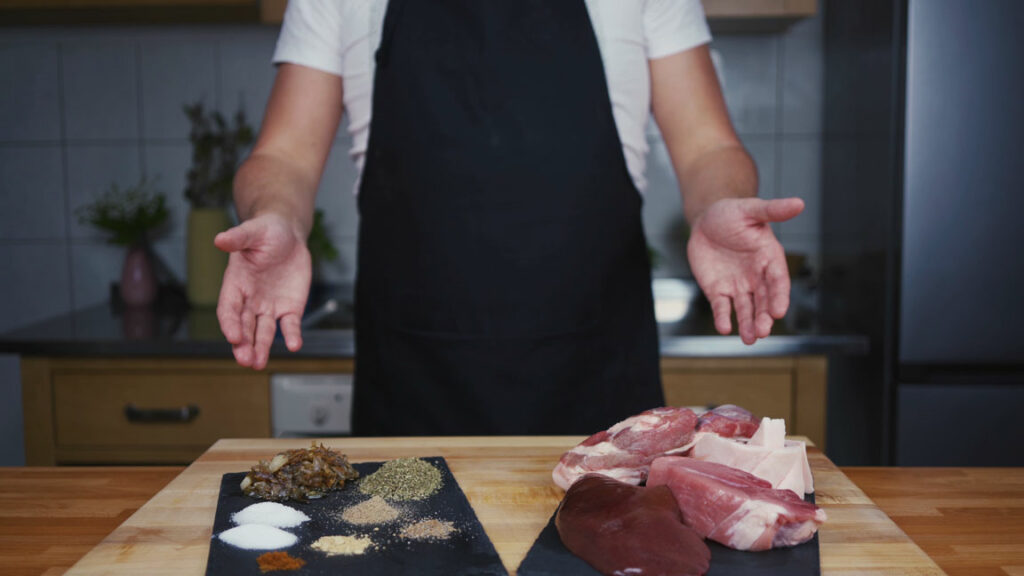
In classic sausage production, different meat cuts are distinguished by letters and numbers.
- S 1, for example, would be pork, fat and sinewless.
- S 6, on the other hand, would be pork cheeks without rinds
- R 4 – beef with a maximum of 20% visible fat and about 5% tendons.
As you can see, this is not very practical for home use. After all, how are you supposed to know what R 3 is? I don’t think the matching table is a good solution either.
Therefore, in all my recipes, the pieces of meat to be used are given in a simplified form.
I then speak of “lean pork” or “fatty pork belly”, for example. This leads to the fact that depending on where you buy your meat, there may be small variations. These are undesirable in industrially produced sausage. For us hobby sausage makers, however, they are negligible.
If you still let your butcher know what you are planning, he/she can make sure you get the right cuts of meat.
Since the meat is usually ground during sausage making, you can also ask for cuts from your butcher. In most cases, excellent sausage can be made by using different cuts of meat than specified in the recipes. A sometimes important factor here is the meat / fat ratio.
I can only recommend here to consult with your butcher and tell what you want to make.
This has the following advantages:
- It is known what you want to make and you get the right cuts of meat.
- You do not only get “nice pieces”, which are not important for sausage making, but you can get cheaper cuts.
The longer you make sausage, the more you get a feel for the meat and can gradually change it on your own according to your taste.
Unfortunately, not all meat is the same.
That’s why next comes…
My tips for buying meat
If you want to get into “sausage production” soon, the first important step is… Buying meat
What’s the best way to go about it?
First of all, we live in a time of increased meat and food scandals
That’s why I advise you to buy only meat whose origin is known
Good sources are, for example, farmers who market directly from their farms, butchers who only slaughter meat from local stables, or the meat departments of some wholesale markets that advertise meat from known sources
In my opinion, you should keep your hands off meat offers where the seller cannot state the exact origin
A good relationship of trust between supplier and buyer is the best basis for home-made sausage
Therefore, a few small rules:
- Buy only where you can really have confidence
- Do not put the price first. You can use cheap offers, but not at the expense of meat quality and animal welfare.
- Think carefully about which sausage to make and how much. This way you reduce food waste.
- Always process the meat into sausage as soon as possible after purchase
- You can try to have your meat minced by the seller. However, this presupposes that he is ready for it and that the respective perforated disc is available. If so, this will save you time in the production process.
IMPORTANT: If you make the effort to make sausage at home, then buy from an organic butcher (preferably regional). It is not worth saving on animal welfare. The taste of sausage made from meat from species-appropriate animal husbandry exceeds conventional husbandry (for me personally) by a factor of 10.
Next you will find a list of meats, which I have divided into 3 types (lean, medium, fatty) . The examples are often related to bratwurst, but the meat can be used in any type of sausage….
Beef / Veal
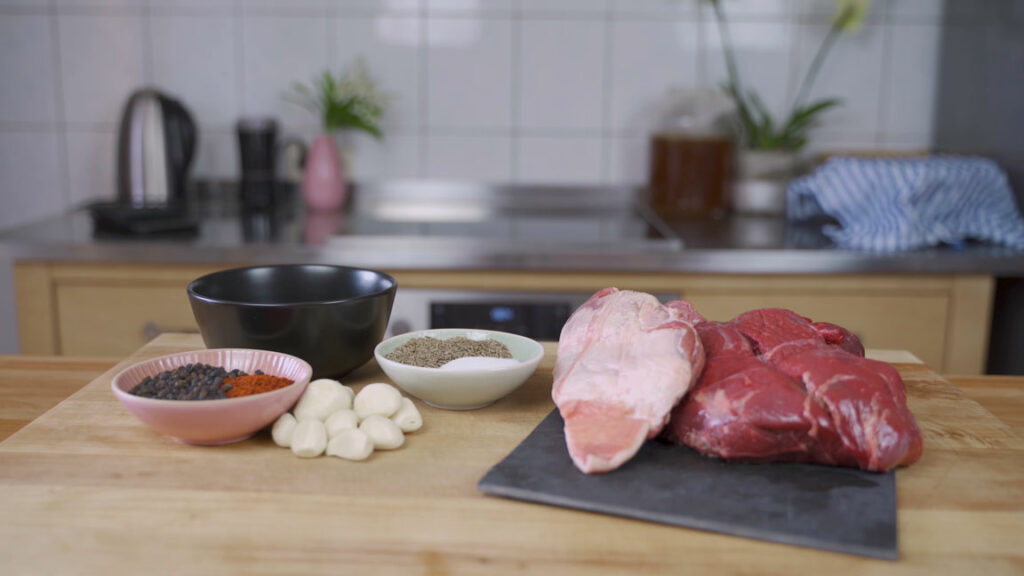
You will find rather lean meat in the lower and upper rounds. Neck, for example, already brings a little more fat, whereas the breast really has a lot of fat.
Pork
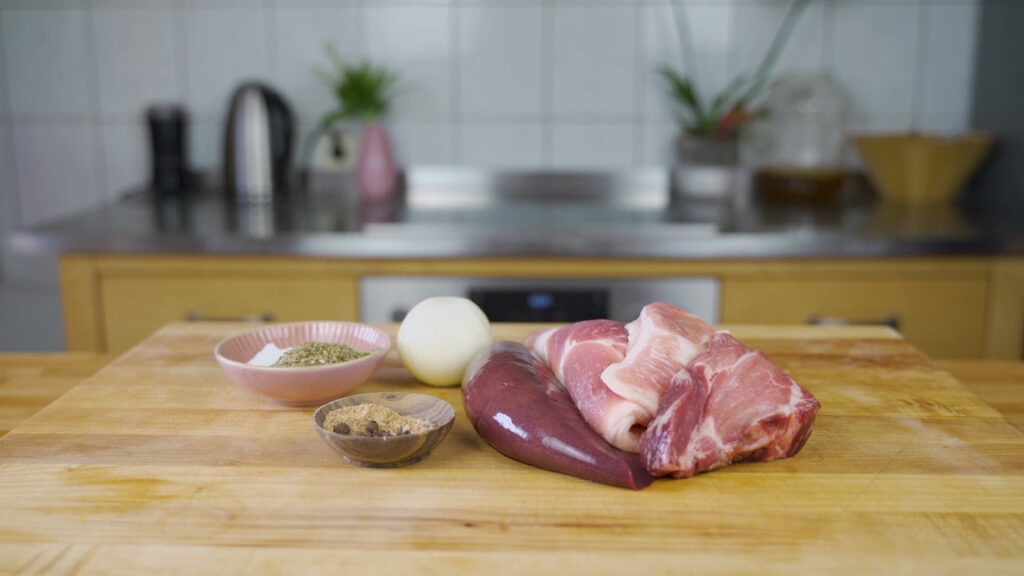
Again, the lower and upper ham parts are particularly lean, whereas pork shoulder, for example, has an almost perfect lean-to-fat distribution for making bratwurst. The fattiest part of the pig is, of course, the belly.
Chicken
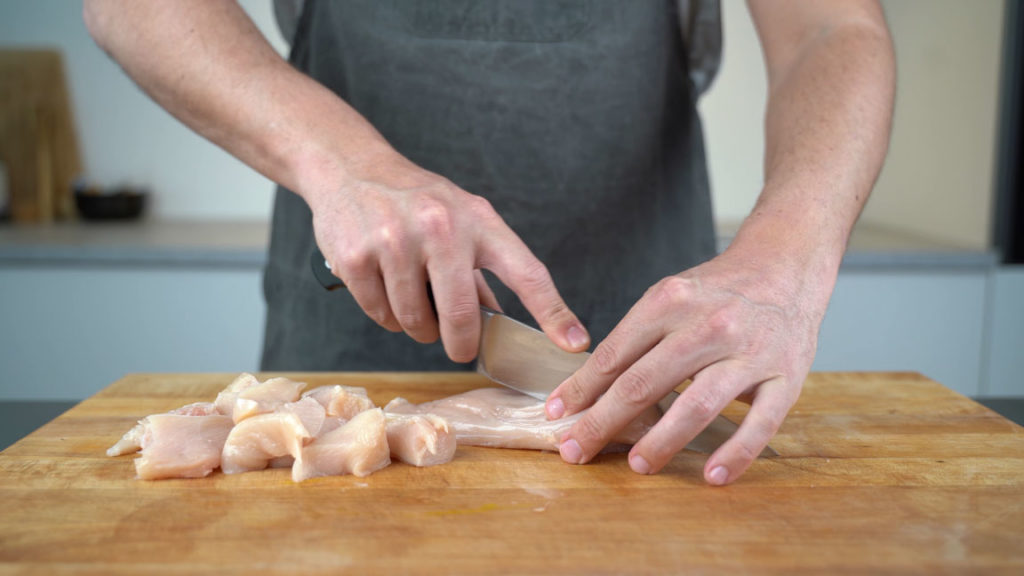
With chicken, you usually have to add extra fat because the meat is very lean. Only the use of chicken with skin would be a possibility to produce 100% chicken sausage.
Chapter 3: These sausages you can make yourself
All industrial sausages and, of course, those made in the hobby kitchen can be divided into four broad groups….
The great thing is… you can make all 4 types of sausage yourself at home
Fresh sausage / Bratwurst
Fresh sausage is made from fresh raw meat and must be treated the same way. The best known is the bratwurst. Fresh sausage has no chemical additives or preservatives added to it, so it must be cooked directly or frozen if you are making it for the future.
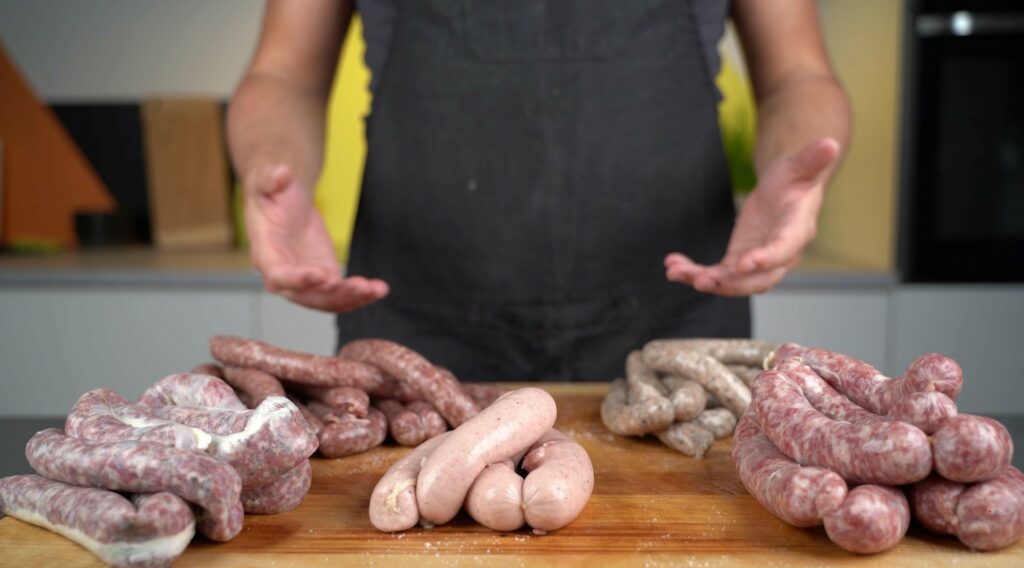
Cured sausages
Raw or cured sausages are made from raw meat and fat, which does not undergo any heat treatment. The sausages become ready to eat through a maturing and drying process, during which complicated biochemical and physical processes take place. These then give the sausage its appearance, characteristic taste and shelf life
Cured sausages have the longest shelf life of all sausages. The shelf life is achieved by the relatively high water loss during the maturing and drying process and the use of curing salt
They are also very often cold smoked, as the process has excellent preservative properties.
Raw sausages include all types of salami and cervelat, raw polish, all types of Mett and Teewurst and all other types of sausages that do not undergo heat treatment
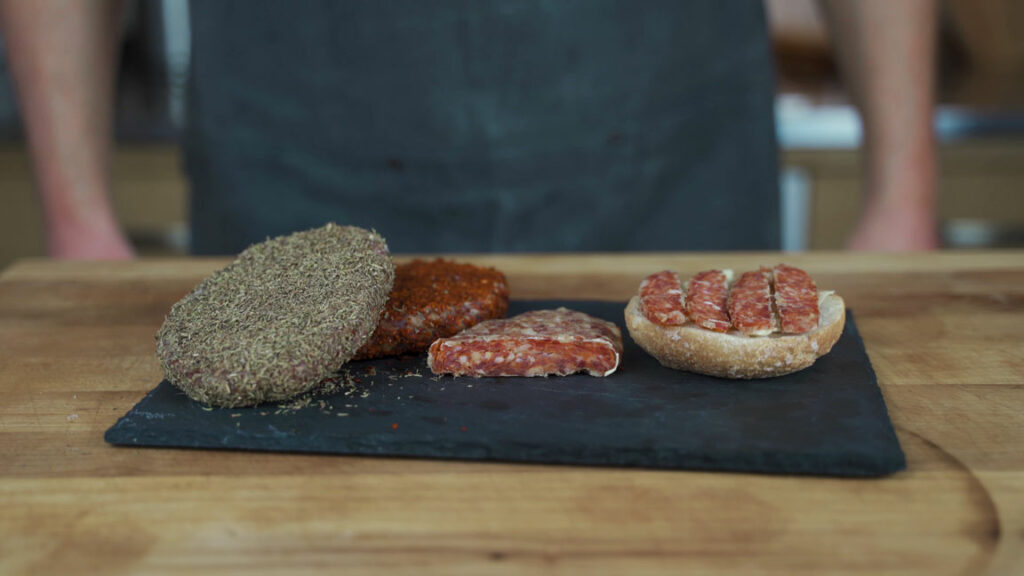
There are spreadable and cut-resistant varieties. Spreadable would be, for example, Teewurst and most Mettwurst. Cuttable varieties are all salami and cervelat varieties
For the hobby sausage production is the raw sausage production with the most difficult because you need special equipment as well as the suitable environment.
Cooked sausages
Like raw sausages, cooked sausages are also made from raw material. The difference is that they undergo heat treatment after stuffing. By scalding or also cooking at certain temperatures, the proteins coagulate. The coagulation of proteins gives the cooked sausages their cut resistance
Well-known types of cooked sausage include Bologna, beer ham, Krakauer, Jagdwurst, Lyoner, Fleischwurst, Gelbwurst, Knackwurst, Wienerle and Mortadella.
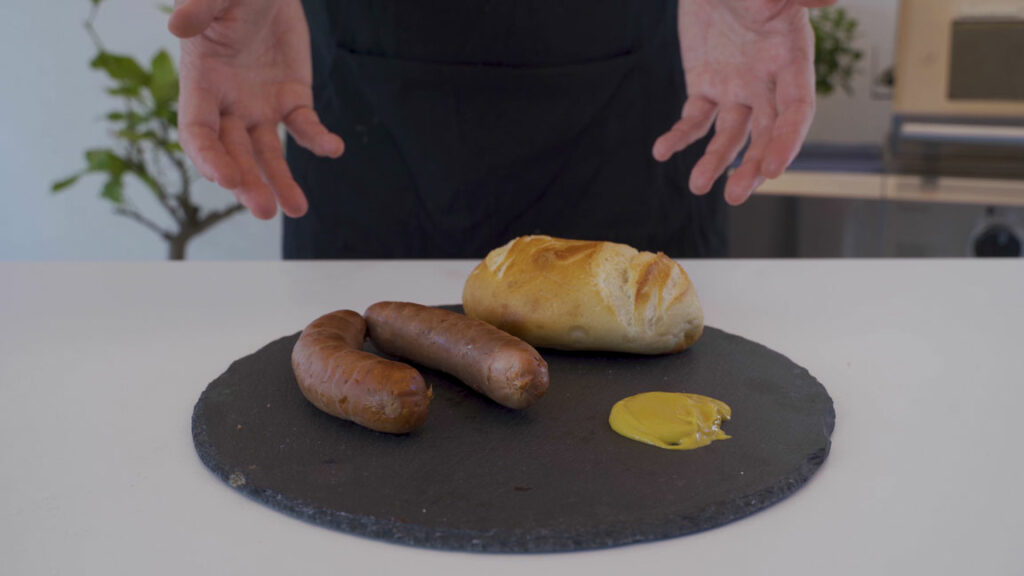
Cooked sausages can also be subdivided into red cut and white cut varieties. Varieties with a red cut are, for example, ham sausage and beer ham, a well-known sausage variety with a white cut would be yellow sausage. All cooked sausages with a red cut are made with curing salt and those with a white cut are made with normal table salt.
Pre-cooked sausages
Pre-cooked sausages are made from partially or fully precooked material (muscle meat, fat tissue and offal). They are cooked in low boiling water after filling.This cooking also results in the killing of undesirable bacteria. However, unlike boiled sausages, cooked sausages lose their binding due to double cooking when warm.
Cooked sausages include liver sausages, blood sausages, red sausages and brawn/headcheese.
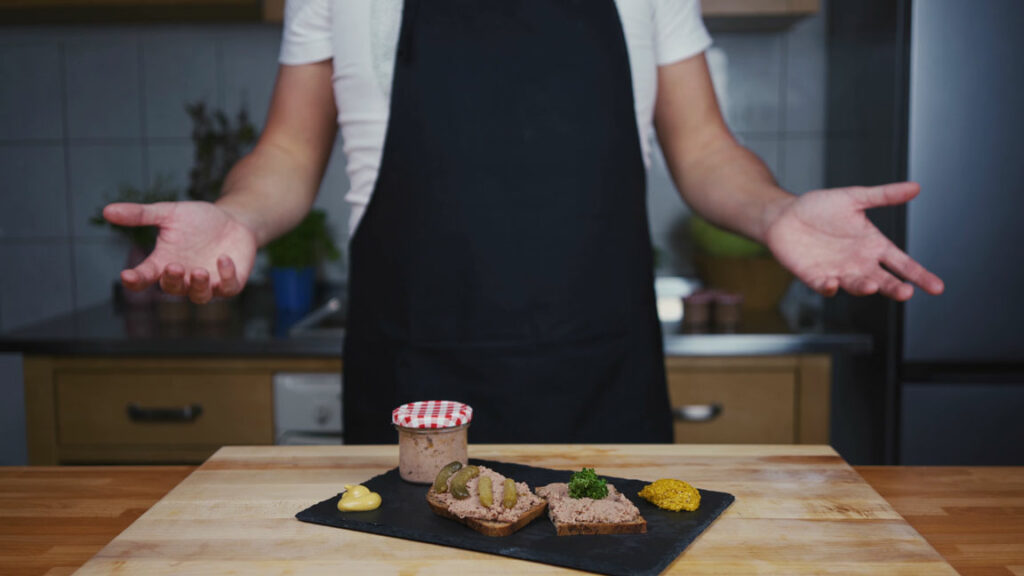
The name liver sausage results from the higher or lower proportion of liver that is always present. Mostly it concerns pig liver, more rarely bovine or calf liver. Blood sausages or red sausages have a relatively high blood content
Sulz sausages contain brawn. A translucent elastic mass made sliceable by coagulated collagenous protein
Sometimes cooked sausages are smoked in cold smoke for a few days after scalding to improve flavor and shelf life
To do this, you must stuff the sausage mixture into porous, smoke-permeable sausage casings. If the sausages cannot or should not be smoked, you can fill them into sterile casings. The sausages will then keep for some time in the refrigerator even if they are not smoked.
Chapter 4: How to preserve, prepare and store the sausage
There are several options for both making and preparing the sausage. I’ve put together an overview of the most common methods for you.
Curing sausage
Fresh meat spoils quite quickly without refrigeration. Therefore, in order to preserve it, you need to preserve it
Salting, i.e. preserving meat with salt, is the oldest way of preserving meat. Already in ancient Egypt, meat was salted and often dried and smoked (dried) over an open fire. The process has changed over time
By understanding the processes that naturally occur during curing, it became clear that common salt alone is not sufficient to preserve meat for a long time and at the same time maintain the natural color of the meat. That is why nitrite curing salt is used today
In curing, a basic distinction is made between dry and wet curing. But a combination of both is also possible. By adding herbs and spices to the curing salt, you can individualize the taste.
If you want to know more about this, you can find my detailed post on curing here
Smoking sausage
Smoking sausage (detailed post), like salting, is one of the oldest preservation methods. The sausage is hung in the smoke for a short or longer period of time. This smoke is produced in special smoking ovens during the incomplete combustion (smoldering) of sawdust
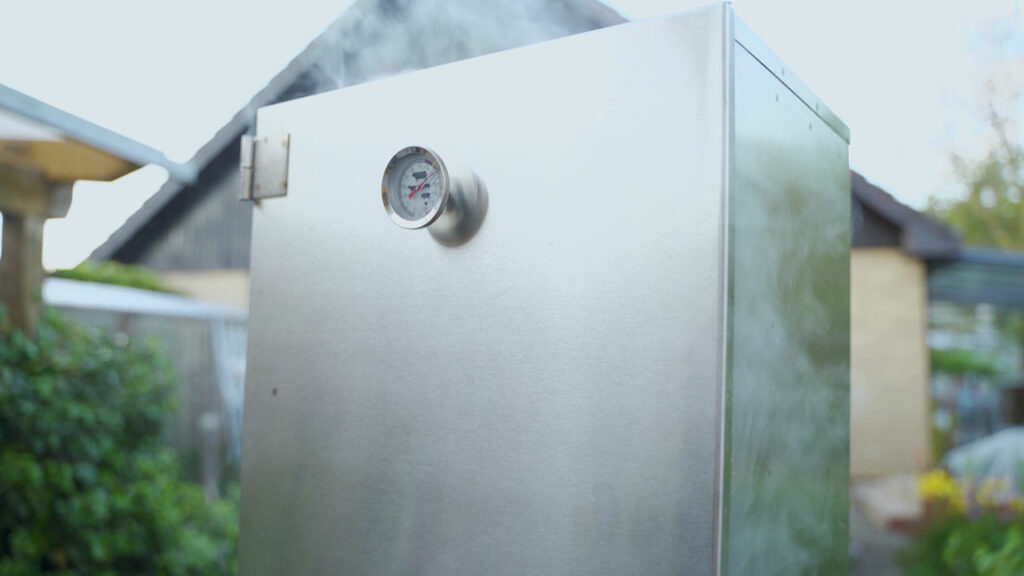
There are three different types of smoke, which are distinguished by their temperature
Cold smoke. Warm smoke and hot smoke.
Cold smoke: temperature at 15-20 °C. In principle, all types of raw sausage are smoked in this way. If blood and liver sausages are to be smoked, cold smoke must also be used. Raw and cooked sausages must be smoked in cold smoke because the fat contained in the sausages would melt at higher temperatures and clog the sausage casings pores. The sausages would then no longer be able to breathe and the contents would mold from the inside out. Cold smoke has the best preservation properties. Particularly strong and long smoked sausages last the longest.
You can find a detailed article on cold smoking here.
Warm smoke: temperature at 30 to 50 °C. In addition to cooked sausages, all grilled sausages can also be smoked before grilling or frying. However, the two most commonly used types of smoking are cold and hot smoke
Hot smoke: temperature 60 to 120 °C. Since the protein coagulates at temperatures above 60 °C, the sausage is not only smoked, but also cooked. Classically, this is the case with Vienna sausages or Krakauer.
Frying sausage
I’m sure I don’t really need to explain much when it comes to frying. The only important thing to remember is that the skin can burst very easily when frying a bratwurst if the sausage has been stuffed too tightly, cooked too quickly over high heat, or immersed in boiling fat.
Bursting does not affect the taste and I must confess that I quite like the crispy bits when bursting.
The risk can be mitigated by piercing the skin or cooking the sausages before grilling.
Canning / preserving sausage
Canning / preserving is a very good way to make sausages without having to consume them directly
The principle is relatively simple: Raw or partially precooked meat or sausage meat is put into cans or jars and cooked in boiling water for a certain time. During the cooking process, the heat gradually penetrates the sausage meat
The sausage mass becomes firm to the cut due to protein coagulation. Any microorganisms present are killed by the heat. However, it is a prerequisite that the can/jar is cooked for a sufficiently long time and at 100 °C. You will find the exact boiling time in most recipes
If mistakes are made during sterilization, the contents can easily spoil. Bacteria decompose the contents over time and excrete carbon dioxide, which causes the can lid to rise. Cans with domed lids are called bombards. Under no circumstances should the contents be eaten. Eating them would have serious consequences that could lead to death. So always throw away any spoiled jars!
If you want to know more about this, you can find my detailed post on preserving sausage here.
Freezing and storing sausage
Fresh sausage can be stored in the refrigerator for up to three days. It should be frozen if you intend to use it after that
Cooked, smoked semi-dry sausage can be stored in the refrigerator for two to three weeks. But even that should be frozen if you intend to keep it longer.
Dry and dehydrated sausages can be stored for six months or longer without refrigeration, but remember that they will become drier the longer you store them
Find out even more about freezing sausage here.
Chapter 5: Homemade sausage recipes
Here you will find five different recipes of mine that are perfect to get you started. I’ve also included a link to my 100+ other sausage recipes.
Make your own liverwurst
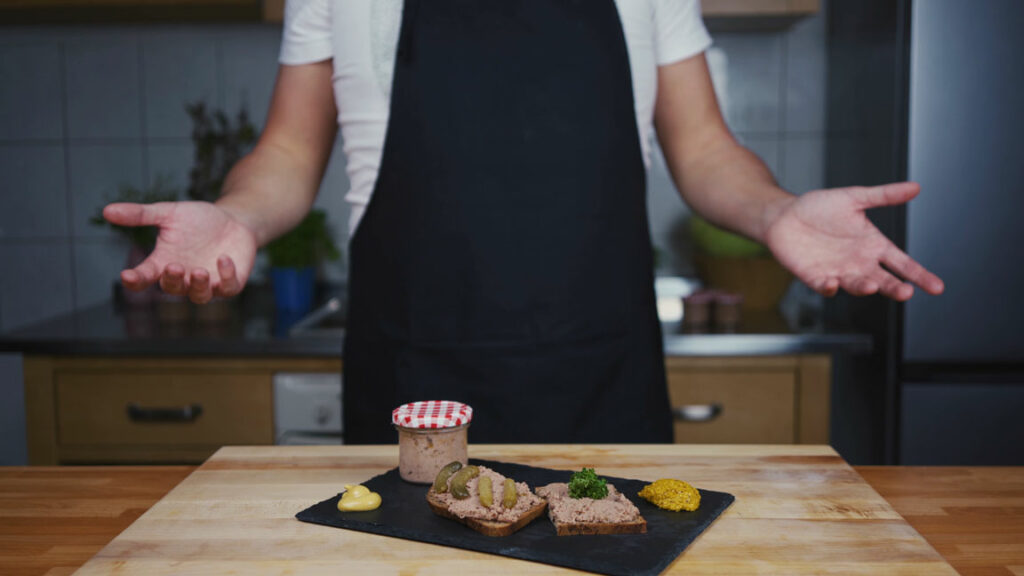
Liverwurst is quick to make and also makes a perfect gift by filling it in a jar. You can find the liverwurst recipe here
Make Bratwurst yourself

Here you come to my Bratwurst make yourself tutorial. The preparation is mega easy and with little materials you have an awesome result. In the article you will find 28 Bratwurst recipes.
Make your own Leberkäse
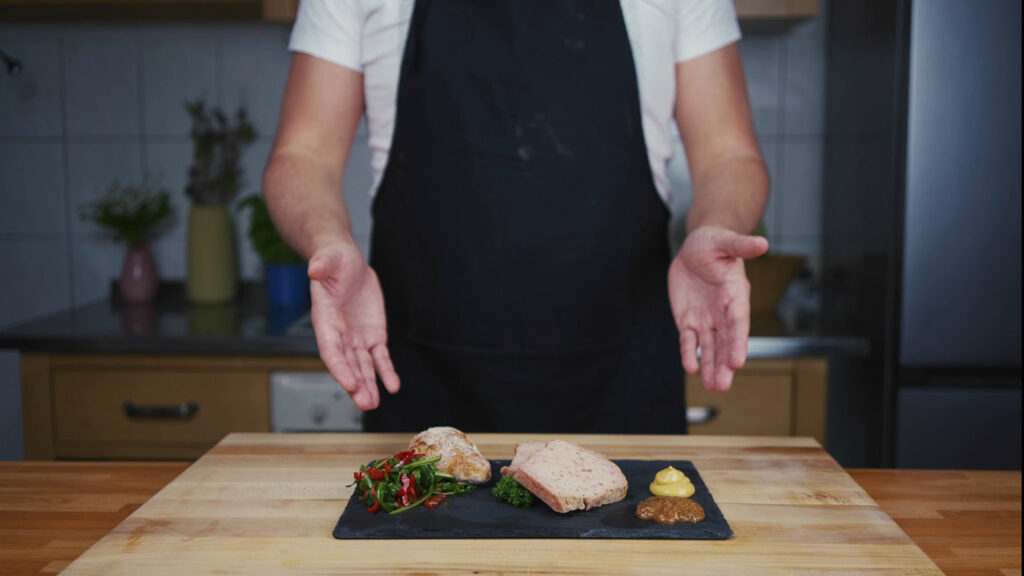
A Leberkäse goes simply always. You want to inspire your friends and family, then this recipe (click here) is just right
Make salami yourself
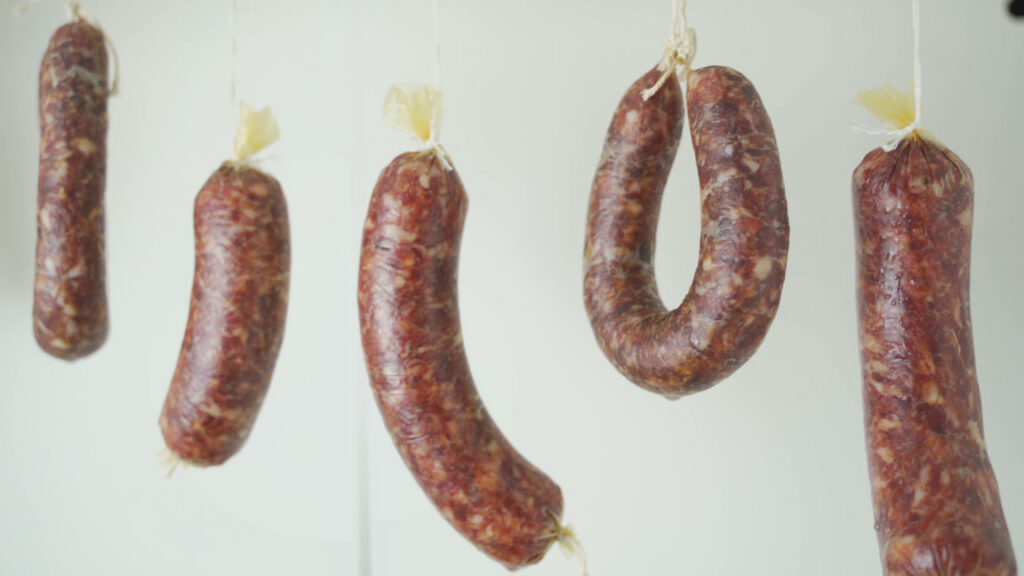
In this post I’ll show you how to make tasty salami yourself. You need few materials and with a moderate effort you have made a perfect raw sausage yourself.
MakeBologna yourself
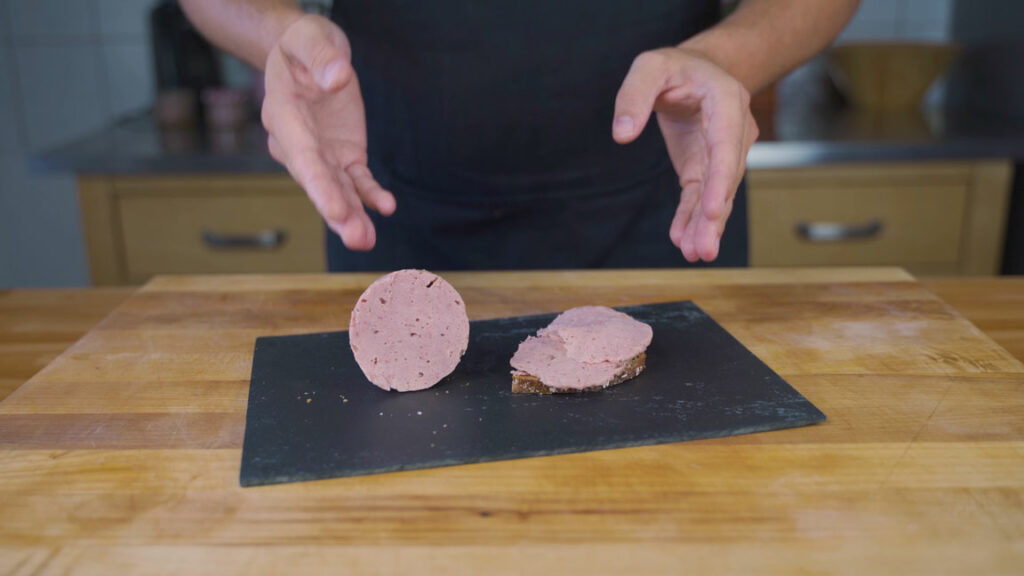
A ham sausage is the classic cold cuts. You can vary here super with the ingredients. You can find the ham sausage recipe here.
Over 100 more sausage recipes
Here you can find all my sausage recipes (as of 14.07.2022: 108 pieces)

